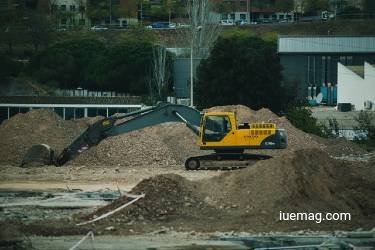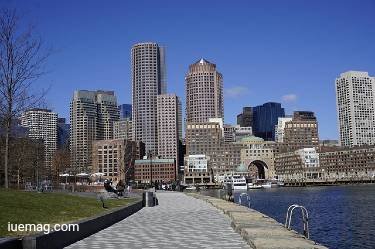

Sustainability: The Road Towards A Greener Future For Land Development
 Land development isn't the easiest thing to do sustainably, but with growing population numbers placing an increasing strain on our finite resources, developers are under more pressure than ever to find ways to develop land in a sustainable manner. When talking about sustainable land development, it's easy to get caught up in things like the building materials used—a reasonable concern given that concrete is estimated to be responsible for 8% of the world's global emissions—but there can be a sustainable element to land clearing as well. The days of heading into a patch of raw land with a bulldozer and no thought for the local ecosystem should be long behind us, but that doesn't mean that land cannot be developed using more sustainable practices.
Land development isn't the easiest thing to do sustainably, but with growing population numbers placing an increasing strain on our finite resources, developers are under more pressure than ever to find ways to develop land in a sustainable manner. When talking about sustainable land development, it's easy to get caught up in things like the building materials used—a reasonable concern given that concrete is estimated to be responsible for 8% of the world's global emissions—but there can be a sustainable element to land clearing as well. The days of heading into a patch of raw land with a bulldozer and no thought for the local ecosystem should be long behind us, but that doesn't mean that land cannot be developed using more sustainable practices. Mitigation and Incentivization
An important reality to face when looking at sustainable land development is that there is no such thing as zero impact. Developing raw land will always result in significant changes to that land, but that doesn't mean that the effects on the local ecosystem can't be mitigated. Right now, there are land clearing and development companies that are incorporating green practices into their services. If you go online and search for sustainable land clearing near me, you may find that some companies that are offering forestry and land clearing services are already utilizing low-impact techniques to make way for future developments without harming the land.
 Giving incentives to corporations that are practicing sustainable land development may also help to encourage others to follow suit. Incentivizing will ultimately lead to developers bringing down their carbon footprint and looking out for environmental considerations because it will be the most cost-effective way to develop the land. Giving recognition to companies that practice sustainability can also help to advocate for green land development. Companies like New York's Turner Construction Company understand the importance of sustainable development, having consistently topped ENR's Top 100 Green Building Contractors list for the past few years.
Giving incentives to corporations that are practicing sustainable land development may also help to encourage others to follow suit. Incentivizing will ultimately lead to developers bringing down their carbon footprint and looking out for environmental considerations because it will be the most cost-effective way to develop the land. Giving recognition to companies that practice sustainability can also help to advocate for green land development. Companies like New York's Turner Construction Company understand the importance of sustainable development, having consistently topped ENR's Top 100 Green Building Contractors list for the past few years.Techniques and Practices
The key to sustainable land development lies primarily in using better practices that minimize the impact of the development. Practices like clear-cutting and bulldozing can lead to a situation where continued work needs to be carried out on the land to prevent regrowth. In contrast, forest mulching nourishes the land while creating a natural barrier for the more invasive species. We can already see these practices in action in the real world, such as with the Utah Division of Wildlife Resources (DWR) mulching thousands of trees to ensure the sustainability of native plants and wildlife.
Options for more sustainable materials are also increasing, with companies like Holcim offering a broad range of green concrete. Incorporating environmental design is another way to minimize the impact of land development, both on the natural area and on any nearby homes or businesses. Working with the local topology rather than bulldozing is one example. Taking advantage of opportunities for passive solar systems is another.
Ultimately, while developers' bottom lines are a significant driving force, the specter of climate change and dwindling resources is not going away. By utilizing more sustainable techniques, land can continue to be developed to meet the needs of our growing population. And all with a minimal impact on our precious environment.
Image 1: Photo by Ricardo Ortiz from Pexels
Copyrights © 2025 Inspiration Unlimited - iU - Online Global Positivity Media
Any facts, figures or references stated here are made by the author & don't reflect the endorsement of iU at all times unless otherwise drafted by official staff at iU. A part [small/large] could be AI generated content at times and it's inevitable today. If you have a feedback particularly with regards to that, feel free to let us know. This article was first published here on 3rd November 2021.
Overthinking? Uninspired? Brain Fogged?
Let's Reset That! Try iU's Positivity Chat NOW!

All chats are end-to-end encrypted by WhatsApp and won't be shared anywhere [won't be stored either].


